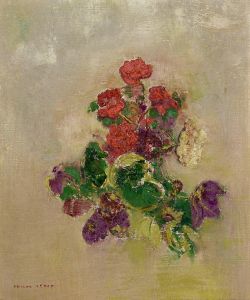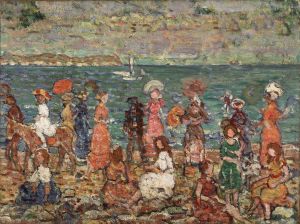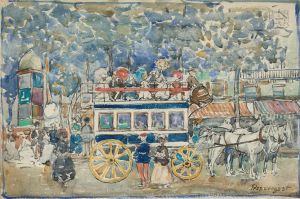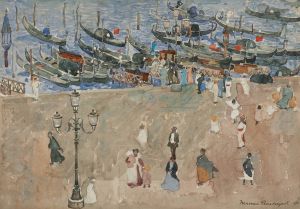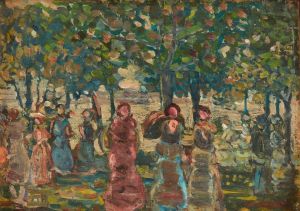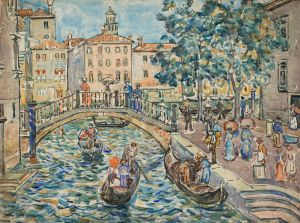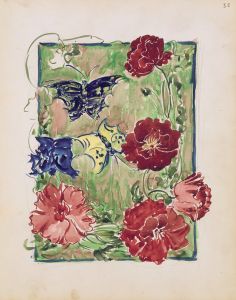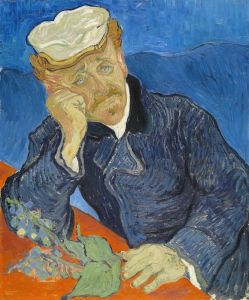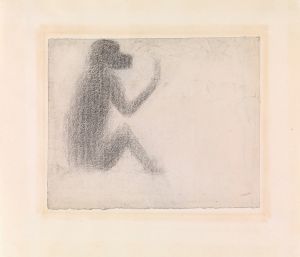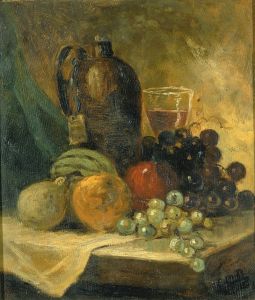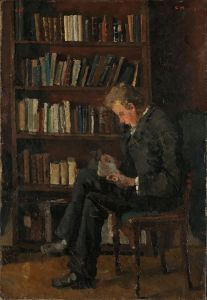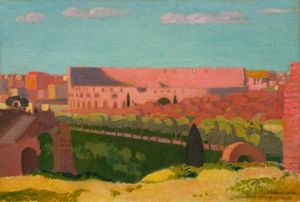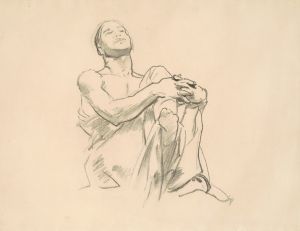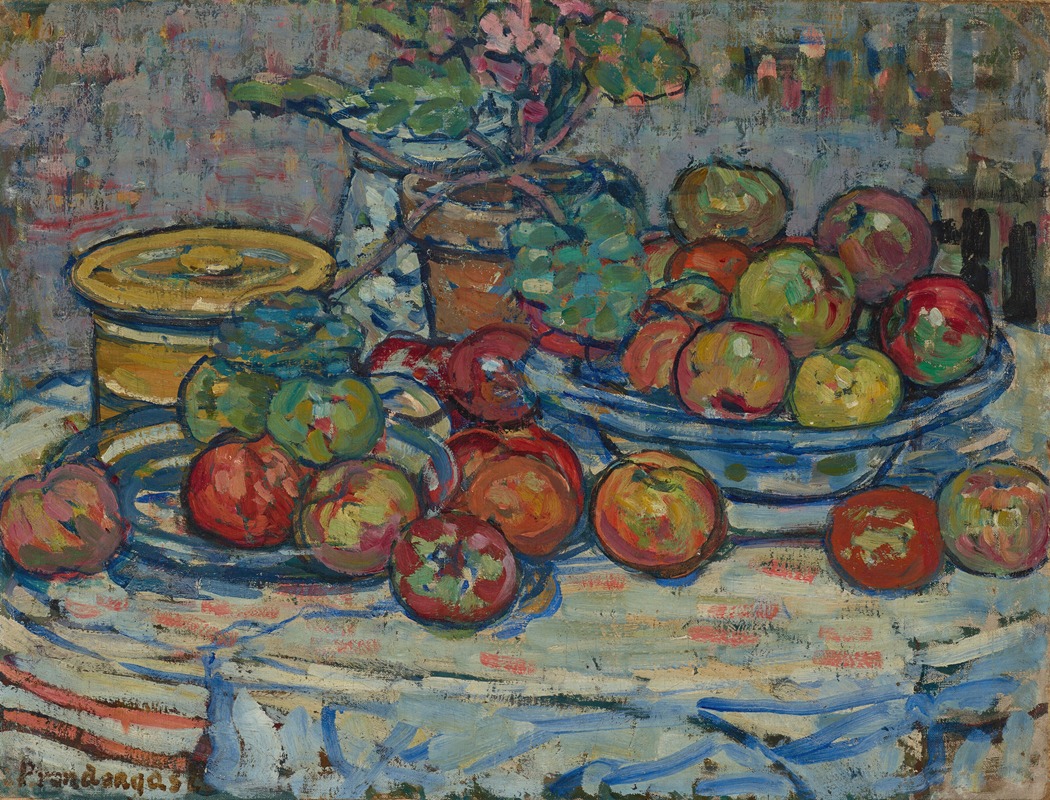
Still Life
A hand-painted replica of Maurice Prendergast’s masterpiece Still Life, meticulously crafted by professional artists to capture the true essence of the original. Each piece is created with museum-quality canvas and rare mineral pigments, carefully painted by experienced artists with delicate brushstrokes and rich, layered colors to perfectly recreate the texture of the original artwork. Unlike machine-printed reproductions, this hand-painted version brings the painting to life, infused with the artist’s emotions and skill in every stroke. Whether for personal collection or home decoration, it instantly elevates the artistic atmosphere of any space.
Maurice Prendergast, an American Post-Impressionist artist, is renowned for his vibrant and decorative style, often characterized by a mosaic-like quality and a keen sense of color and pattern. While Prendergast is primarily celebrated for his scenes of leisure and landscapes, he also explored other genres, including still life. However, specific information about a painting titled "Still Life" by Maurice Prendergast is not widely documented or recognized in major art historical references or collections.
Prendergast was born in St. John's, Newfoundland, in 1858 and later moved to Boston, Massachusetts. He initially worked as a commercial artist before pursuing formal art education in Paris, where he was influenced by the burgeoning Post-Impressionist movement. His exposure to artists like Paul Cézanne and the Nabis group, including Pierre Bonnard and Édouard Vuillard, significantly shaped his artistic approach. Prendergast's work is noted for its emphasis on flat areas of color and rhythmic patterning, which he applied across various subjects.
Although Prendergast's oeuvre predominantly features bustling urban scenes, parks, and beaches filled with figures, his approach to still life would likely reflect his characteristic style. His paintings often exhibit a strong decorative quality, with an emphasis on the arrangement of color and form over realistic representation. This approach aligns with the broader Post-Impressionist movement, which sought to transcend the limitations of Impressionism by focusing on symbolic content, formal order, and structure.
Prendergast was a member of The Eight, a group of American artists who exhibited together in 1908 as a reaction against the conservative standards of the National Academy of Design. The group, which included artists like Robert Henri and John Sloan, was instrumental in the development of American modernism. While The Eight is primarily associated with urban realism, Prendergast's contribution was distinct due to his more abstract and decorative style.
Throughout his career, Prendergast exhibited widely, including at the Armory Show of 1913, which was pivotal in introducing European modernist art to an American audience. His work is held in numerous prestigious collections, such as the Metropolitan Museum of Art in New York and the Museum of Fine Arts in Boston.
Despite the lack of specific information on a painting titled "Still Life" by Maurice Prendergast, his overall body of work demonstrates a consistent interest in exploring the interplay of color, form, and pattern. His legacy is that of an artist who bridged the gap between European Post-Impressionism and American modernism, leaving a lasting impact on the trajectory of 20th-century art in the United States.
For those interested in Prendergast's work, examining his more well-documented pieces, such as "Central Park" or "The Grand Canal, Venice," can provide insight into his artistic techniques and thematic interests. These works exemplify his unique approach to composition and color, which would likely inform any still life paintings he may have created.





